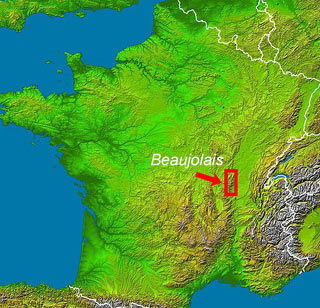 "Le Beaujolais Nouveau est arrivé !" This is a phrase you're likely to hear every year on the third Thursday in November, at 12:01 a.m. local time around the globe, as the newest vintage of wine from France's Beaujolais region is released to the public. This wine, fermented for just a few weeks, is known as Beaujolais Nouveau. It is a red wine made from Gamay grapes that are grown and harvested by hand in the Beaujolais province, at the southern tip of Burgundy.
"Le Beaujolais Nouveau est arrivé !" This is a phrase you're likely to hear every year on the third Thursday in November, at 12:01 a.m. local time around the globe, as the newest vintage of wine from France's Beaujolais region is released to the public. This wine, fermented for just a few weeks, is known as Beaujolais Nouveau. It is a red wine made from Gamay grapes that are grown and harvested by hand in the Beaujolais province, at the southern tip of Burgundy.Though perhaps not as complex as red wines from this region that are aged for one or more years, Beaujolais Nouveau is a bright, fruity, and very drinkable wine. It is recommended to be served slightly chilled, and is intended for immediate consumption. It is not a variety to stock away in the wine cellar, as it does not improve with age.
Beaujolais Nouveau is produced using carbonic maceration. This whole-grape anaerobic fermentation process brings out fruit flavors, without imparting bitter tannins from the grape skins. Whole bunches of grapes, stems and all, are placed in huge vats, along with some yeast. The vats are sealed and carbon dioxide is introduced. The weight of the grapes themselves crushes those at the bottom of the vat, which begin to ferment. More carbon dioxide is released by the fermenting fruit, and in this environment, starved of oxygen (the 'anaerobic' part), fermentation begins even in the uncrushed grapes. Eventually the fermentation process causes the whole grapes to burst, releasing their juice. In a short six to eight weeks, the wine is ready to be bottled, shipped, and consumed.
Considered by some wine connoisseurs to be too simple, many find the simplicity and freshness of this wine to be its greatest charm. And, a plus for those minding their budget, Beaujolais Nouveau is very affordable.
In the US, with Thanksgiving falling just a week after 'Beaujolais Nouveau Day,' it's the perfect opportunity to stock up on a few bottles to enjoy with friends and family over the holiday weekend. Outside the US, well, you really don’t need a special occasion to enjoy this wonderfully refreshing, young wine.
Visit BoutiqueHotelBarges.com for information on cruising in the Burgundy region.
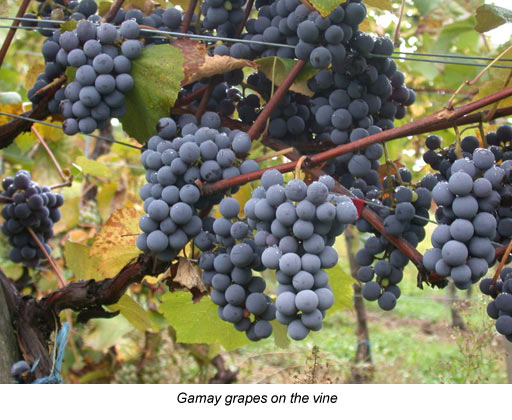

 Each year, on the third weekend of November, Beaune plays host to the world's most famous charity wine auction. Professionals, connoisseurs and wine lovers come together for two days of festivities, the epitome of pure Burgundy tradition.
Each year, on the third weekend of November, Beaune plays host to the world's most famous charity wine auction. Professionals, connoisseurs and wine lovers come together for two days of festivities, the epitome of pure Burgundy tradition.The auction takes place in L'Hôtel-Dieu, an extraordinary collection of 15th century hospital buildings. Since 1471, vast tracts of land have been donated and bequeathed to the Hospices de Beaune and its vineyards extend throughout the côtes de Nuits and the côtes de Beaune. Since 1859, the Hospices' prestigious vintages have been sold by candlelight on the third Sunday of November. For several centuries now, the entire proceeds of this exceptional charity auction have been dedicated to the charitable and religious works of the old hospices as well as new civil and secular hospital institutions.
Below are scenes from the 2015 Gala Dinner held at L'Hôtel-Dieu compliments of Rory and Caroline Macrae (pictured on right), owners of Barge Après Tout, who attended this fabulous event.

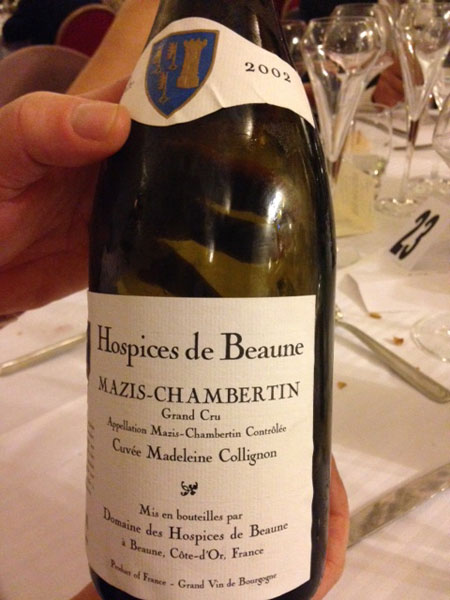




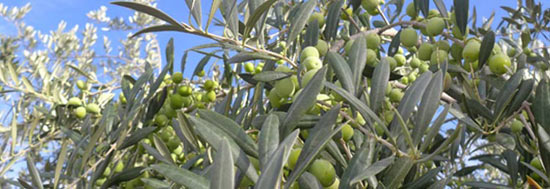
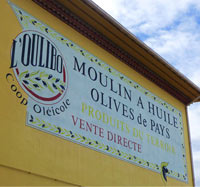 A Visit to the Olive Mill
A Visit to the Olive Mill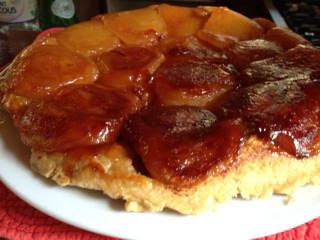
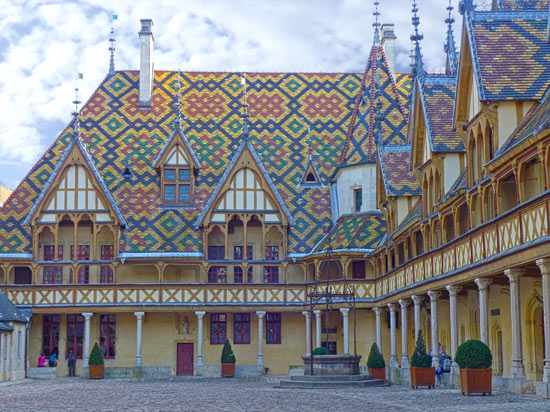
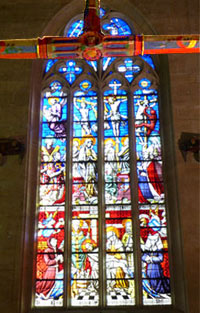 Although there are no Grand Cru vineyards in Beaune, many of the vats and cellars where wines are fermented and aged are located within the city. It is a hub for the wine industry, with suppliers of tractors and other wine-making equipment located here, as well as a number of wine-related institutes and associations. It is also headquarters for many négociants, the wine merchants who purchase the products of smaller growers and winemakers, to be bottled and sold under a larger domaine's label.
Although there are no Grand Cru vineyards in Beaune, many of the vats and cellars where wines are fermented and aged are located within the city. It is a hub for the wine industry, with suppliers of tractors and other wine-making equipment located here, as well as a number of wine-related institutes and associations. It is also headquarters for many négociants, the wine merchants who purchase the products of smaller growers and winemakers, to be bottled and sold under a larger domaine's label.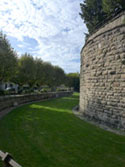 Beaune is an ancient city, whose settlement pre-dates Roman times. Its history continues through the Middle Ages and Renaissance, and survives today, with about half of the battlements, ramparts, and moat of the Medieval walled city remaining intact.
Beaune is an ancient city, whose settlement pre-dates Roman times. Its history continues through the Middle Ages and Renaissance, and survives today, with about half of the battlements, ramparts, and moat of the Medieval walled city remaining intact.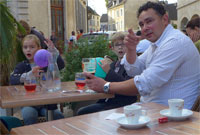 The older section of the city features a cluster of shops and cafés around the central square. Shop here for wine (of course!), as well as other gourmet French treats, and fashionable clothing. An afternoon stroll to window-shop, stopping at an outdoor cafe for a pick-me-up, provides great entertainment in itself.
The older section of the city features a cluster of shops and cafés around the central square. Shop here for wine (of course!), as well as other gourmet French treats, and fashionable clothing. An afternoon stroll to window-shop, stopping at an outdoor cafe for a pick-me-up, provides great entertainment in itself.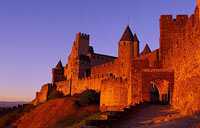 Historic Cité de Carcassonne is a UNESCO World Heritage site. The city rests on a hill overlooking the Aude Valley, and has served as a fortified settlement since prehistoric times. Carcassonne occupies a strategic location, along the ancient routes linking the Atlantic and Mediterranean. It was been held by or ruled over by many different groups throughout history. The earliest occupation of the site dates to the 6th century BC. Romans fortified the hilltop around 100 BC and occupied the area until the fall of the Roman Empire in western Europe. The fortification was taken over in the fifth century by the Visigoths, who founded the city. Carcassonne gained notoriety in the 13th century as a stronghold of Occitan Cathars, before they were defeated by Simon de Montfort.
Historic Cité de Carcassonne is a UNESCO World Heritage site. The city rests on a hill overlooking the Aude Valley, and has served as a fortified settlement since prehistoric times. Carcassonne occupies a strategic location, along the ancient routes linking the Atlantic and Mediterranean. It was been held by or ruled over by many different groups throughout history. The earliest occupation of the site dates to the 6th century BC. Romans fortified the hilltop around 100 BC and occupied the area until the fall of the Roman Empire in western Europe. The fortification was taken over in the fifth century by the Visigoths, who founded the city. Carcassonne gained notoriety in the 13th century as a stronghold of Occitan Cathars, before they were defeated by Simon de Montfort.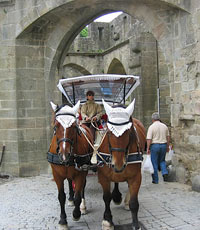 Today Carcassonne provides a wonderful experience for visitors who walk the narrow, car-free streets and tour the restored battlements at the heart of the old city. Carcassonne is home to several one- and two-Michelin-starred restaurants, an abundance of cafés, as well as enough boutiques and shops to fill the afternoon with exciting retail opportunities. For a unique before- or after-cruise stay, try one of the hotels located within the walls of the old city.
Today Carcassonne provides a wonderful experience for visitors who walk the narrow, car-free streets and tour the restored battlements at the heart of the old city. Carcassonne is home to several one- and two-Michelin-starred restaurants, an abundance of cafés, as well as enough boutiques and shops to fill the afternoon with exciting retail opportunities. For a unique before- or after-cruise stay, try one of the hotels located within the walls of the old city.
